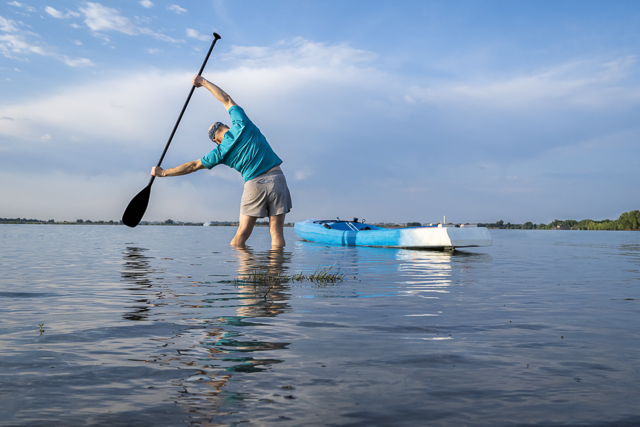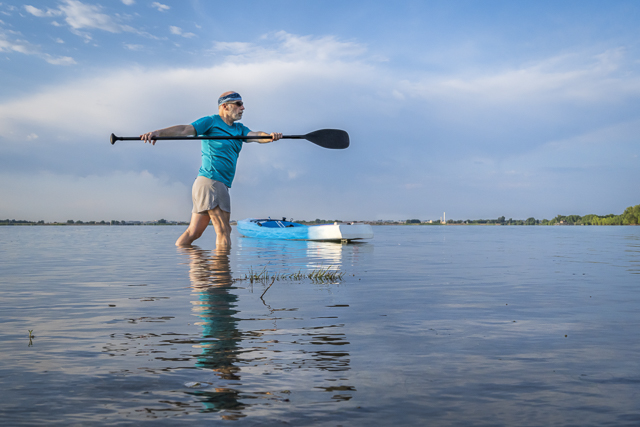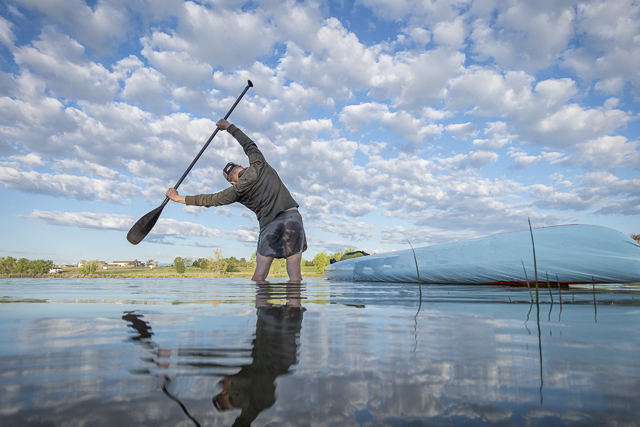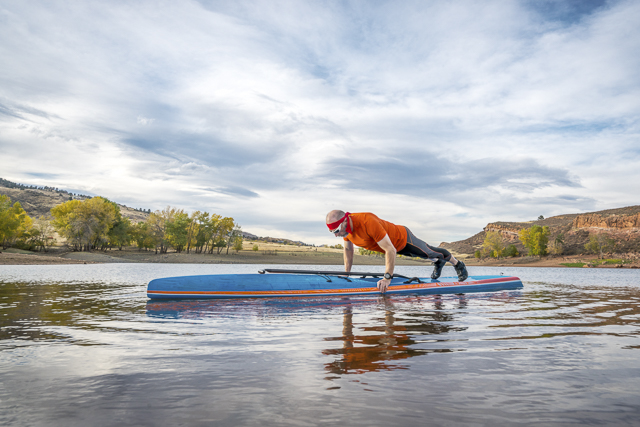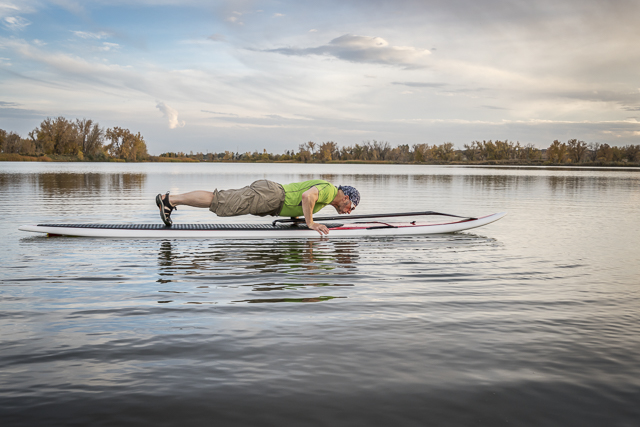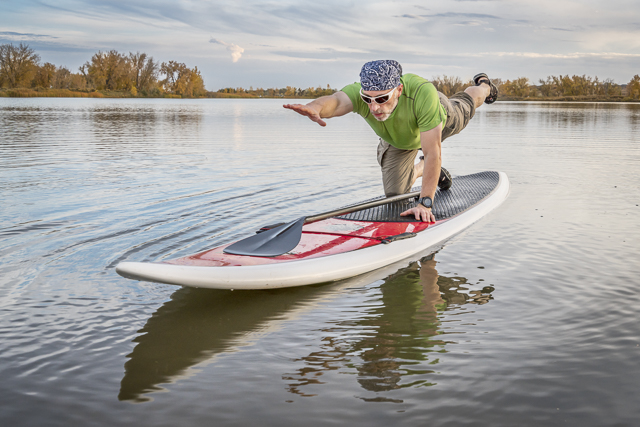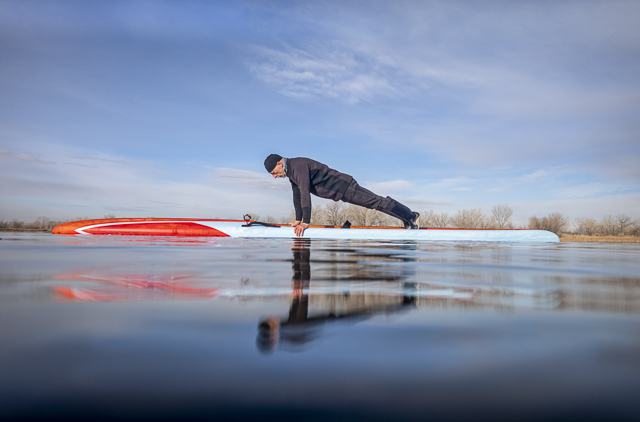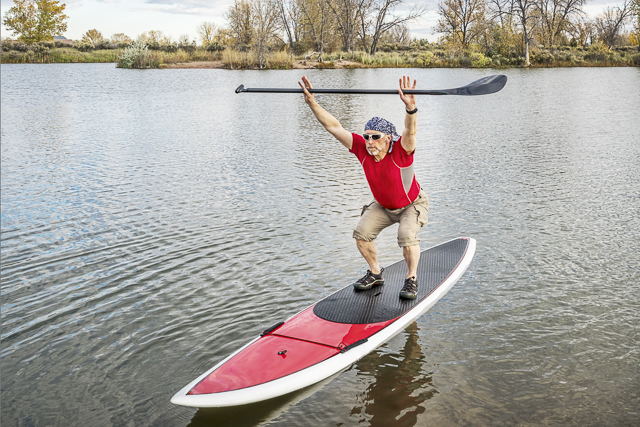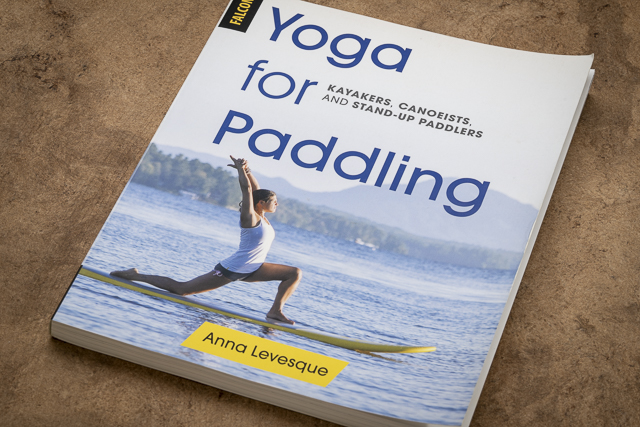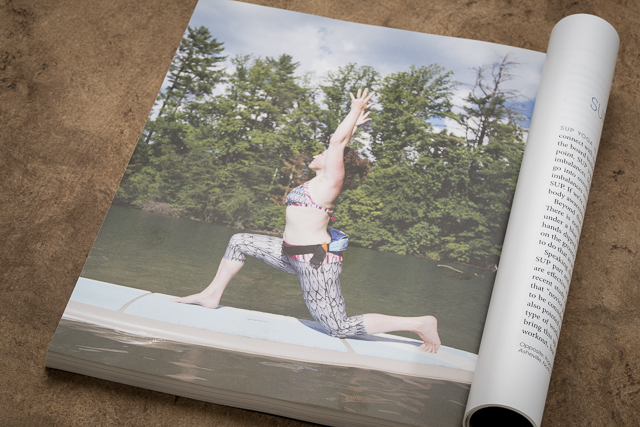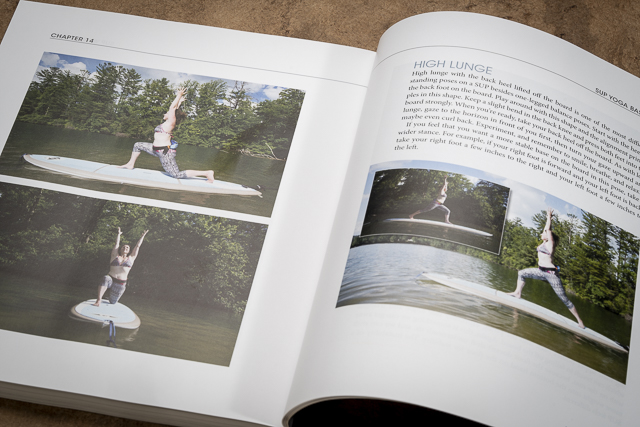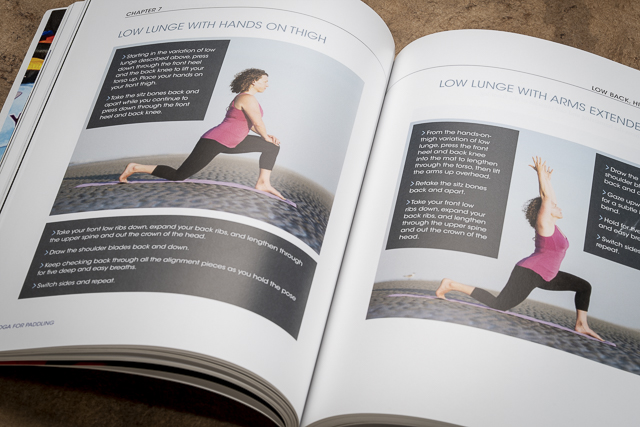Fitness SUP
Before every stand up paddling workout I practice some stretching and warmup exercises on a shore. Once on the water, I incorporate additional simple exercises like push-ups, planks, and sit-ups on my paddleboard to further engage my muscles. My paddling is usually pretty intense and includes some intervals or fartlek since I am training for racing. I often seize opportunities during favorable light conditions to pause for photography sessions, which add a unique dimension to my workout. This is my personal version of SUP fitness.
Alignment based yoga
While I don’t consider myself a dedicated practitioner of yoga, I have integrated certain yoga poses and Tai Chi movements into my daily fitness routine. My racing stand up paddleboards are rather narrow and tippy, so not very well suited for SUP yoga. Nevertheless, I am going to try some yoga poses when water is warmer.
In my exploration of yoga, I have found great value in the book “Yoga for Paddling” by Anna Levesque. This visual and instructional guide provides a comprehensive overview of 30-35 yoga poses specifically tailored to stretch the muscles used most by paddlers while strengthening those that are underutilized.
The book delves into essential topics such as anatomy, alignment principles, and breathing techniques, all of which are intricately tied to the movements involved in kayaking, canoeing, and stand-up paddleboarding. Furthermore, it offers valuable insights on proper paddling techniques, achieving optimal performance, relaxation, and inspiring stories of how yoga has aided in the healing of paddling-related injuries. Each pose is illustrated with one to three photos accompanied by clear and concise instructions on execution and posture maintenance.
Of particular significance to me were the introductory chapters on paddling anatomy and alignment principles, as well as guidance on breathing and stress reduction. As I age, I increasingly recognize the importance of maintaining good posture, balance, and alignment not only for my paddling pursuits but also for my overall well-being.
I wanted to encourage paddlers to work toward alignment and balance using yoga as a preventive measure.
The source of pain in the body is not always obvious, and it helps to have a basic understanding of anatomy.
By paying attention to our bodies and bringing balance to the imbalances, we have the potential to heal ourselves before invasive intervention is needed.
Anna Levesque
